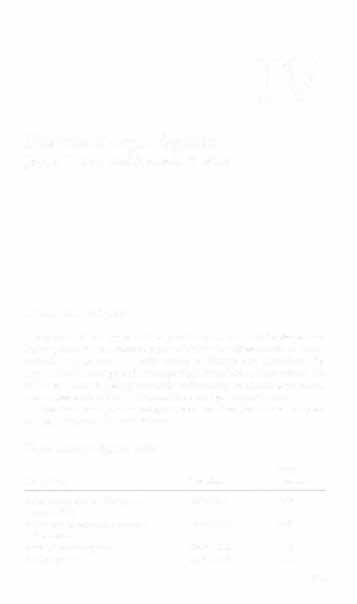i bc27f85be50b71b1 (262 page)
Read i bc27f85be50b71b1 Online
Authors: Unknown

APPENDIX III-C: CIRCULATORY ASSIST DEVICES
835
Table Ill-C. I. Ventricular Assist Devices (VADs)
Pump
Pump Name
Mechanism
Use
Internal VADs
HearrM:ne
Pneumatic
Left ventricle
or electric
Novacor
Electric
Left vencricle
SymbioniCardio We"
Pneumatic
BOth ventricles
rorally artificial heart
External VADs
Bio-Medicus
Centrifugal
Right or left ventricle, or
both
Thocatec
Pneumatic
Right or left ventricle, or
both
Hemopump
Axial flow
Left ventricle
Abiomed BVAD 5000
Pneumatic
Right or left ventricle, or
both
Sources: D;Ha from EF Bond, J Da:<. Nursing Man3gemem Crirical Care. In SM Lewis,
MM Heitkempcr, SR Dirksen (cds), Medical Surgical Nursing: Assessment and Management of linical Problems (5th cd). St. Louis: Mosby, 2000;1926-1927; and NG Smedira, Rl V:ugo, PM McCarthy. Mechanical Support Devices for End-Stage Heart Failure. In Dl
Brown (cd), C1rdiac Inrensive Care. Philadelphia: Saunders, 1998;697-703.
The following are general considerations for the physical therapist
working with a patient on a VAD:
•
The patient'S native heart is still contracting (albeit ineffectively)
and, therefore, the patient'S electrocardiogram will reflect the
native heart's electrical activity. However, because the VAD is performing a majority of the patient'S cardiac output, the patient's peripheral pulse is indicative of the rate set on the VAD.'
•
The rate on a VAD can be fixed or automatic. VADs that have
automatic rates are able to adjust their rate according to the
patient'S needs (i.e., increase with exercise).3.4
•
Patients typically complain of pain at the insertion site of access
lines in the abdomen and may need appropriate premedication
with analgesics before therapy.s


836 ACUTE CARE HAND800K FOR PHYSICAL THERA1)ISTS
•
Certain VADs have a manual mechanical pump feature in case
the VAD malfunctions. Therapists working with these patients need
to be trained on how to use this critically important safety feature."
•
A patient who demonstrates the following hemodynamic variables should have physical therapy deferred until he or she i more stable4:
a.
LVAD rate <50 beats per minute
b.
LVAD volumes dO ml
c.
LVAD flows d.O liters per minute
d.
Systolic blood pressure <80 mm Hg
e.
Heart rate (native) > 150 beats per minute
f.
Sustained ventricular tachycardia or venrricular fibrillation
Extracorporal Membrane Oxygenation
ECMO involves the use of a device external to the body for direct
oxygenation of blood, assistance with the removal of carbon dioxide,
or both. The primary indication for ECMO is cardiac or respiratory
failure that is not responding to maximal medical therapy. The pediatric population with respiratory failure seems to benefit from this therapy the most; however, the successful use of ECMO in the adult
population is improvingJ-9
Patient situations that are likely to require ECMO include the following:
•
Postcardiotomy cardiac or pulmonary support
•
Cardiac arrest
•
Cardiogenic shock
•
Primary respiratory failure
•
The period after lung or heart transplantation or LVAD
placement
The ECMO system consists of a venous drainage cannula, a reservoir for blood, a pumping device that uses a centrifugal or a roller system, an oxygenator, and an arterial or a second venous return can-

Arl'ENDIX III-C: CIRCULATORY ASSIST DEVICES 837
nula.- The pumping device is used to help a failing ventricle circulate
blood, whereas the oxygenator device assists the failing respiratory
system to fully oxygenate the patient. Patients who have respiratory
failure require concurrent mechanical ventilation ro prevenr atelectasis while on ECMO. However, less positive pressure is required to oxygenate blood when on ECMO, resulting in a decreased incidence
of barotrauma.2•7
The system that uses the venous drainage to arterial return cannula
(V-A mode) is primarily performed on patients who require cardiac or
cardiorespiratory support. The V-A mode can be achieved in three ways':
I.
Femoral vein to the ECMO system back to the femoral
artery
2.
Right atrium to the ECMO system back to the ascend-
ing aorta
3 . Femoral vein to the ECMO system back to the ascend-
ing aOrta
The system that lIses the venous drainage to venous rerum cannula
(V-V mode) is primarily used for patients who only have respiratory
failure. The V-V mode can be achieved in twO ways':
I.
Internal jugular vein to the ECMO system back to the
common femoral vein
2.
Common femoral vein drainage to the ECMO system
back to the concralateral common femoral vein
Patients who are on V-A mode ECMO are typically anticoagulated
with heparin and may require the use of IABP to further assist the
ventricle. Patients on the v-v mode may require sedation and or medical paralysis ro help improve oxygenation to organs and tissues by minimizing the metabolic demands of an awake person.'
Complications of ECMO include lower limb ischemia, thrombocyropenia, thromboembolism, and failure of the oxygenaror device.9
General Physical Therapy Considerations
•
Patients requiring the use of circulatory assist devices are typically on bed rest, and physical therapy usually consists of bron-

838 AClITE CARE HANDBOOK FOR PHYSICAL THERAPISTS
chopulmonary hygiene and airway clearance, along with the
prevention of secondary complications of bed rest, such as joint
contracture and skin breakdown.
•
Special care should be taken to avoid disruption of the tubes
associated with these devices.
•
Range-of-motion exercises should not be performed on extremities with ECMO catheters unless otherwise cleared by the physician.
•
Patients with an internal or external VAD who are allowed out
of bed should progress their activity very gradually with careful
monitoring of vital signs and Borg's rating of perceived exertion.
References
1. Mahaffey KW, Kruse KR, Ohman EM. Intra-aortic Balloon Pump
Counterpulsation: Physiology, Parient Management, and Clinical Efficacy. In DL Brown (ed), Cardiac Intensive Care. Philadelphia: Saunders, 1998;647-653.
2. Bond EF, Dax J. Nursing Management; Critical Care. In SM Lewis, MM
Heitkemper, SR Dirksen (eds), In Medical Surgical Nursing: Assessment
and Management of Clinical Problems (5th edl. Sr. Louis: Mosby,
2000;1926-1927.
3. Smedira NG, Vargo RL, McCarthy PM. Mechanical Support Devices
for End-Stage Heart Failure. In DL Brown (cd), Cardiac Intensive Care.
Philadelphia: Saunders, 1998;697-703.
4. Humphrey R, Buck L, Cahalin L, Morrone T. Physical therapy assessment and intervention for patients with left ventricular assist devices.
Cardiopulmonary Phys Ther 1998;9(21:3-7.
5. Buck LA. Physical therapy management of three patients following left
ventricular assist device implantation: a case report. Cardiopulmonary
Phys Ther 1998;9(2):8-14.
6. Morrone TM, Buck LA, Catanese KA, ct al. Early progressive mobilization of patients with left ventricular assist devices is safe and optimizes recovery before heart transplantation. J Heart Lung Transplant
1996;15:423-429.
7. Kaplan RJ, Smedira NG. Extracorporeal Membrane Oxygenation in
Adults. In OJ Goldstein, Me Oz (cds), Cardiac Assist Devices. Armonk,
NY: Furura Publishing, 2000;263-273.
8. Mulroy J. Acute Respiratory Distress Syndrome. In L Bucher, S
Melander (cds), Critical Care Nursing. Philadelphia: Saunders, t 999;
457-458.
9. Copeland JG, Smirh RG (cds). Bridge to Transplanrarion with Mechanical Assist Devices. New York: McGraw-Hili, 2000.

IV
Pharmacologic Agents
Jaime C. Paz and Michele P. West
Pharmacologic Agents